Char Dham Highway Project: A Reckless Road to Salvation
In its eagerness to boost tourism and local employment in the Himalayas, the Union Government of India evades environment protection laws—enraging environmentalists, experts and the residents of Uttarakhand.
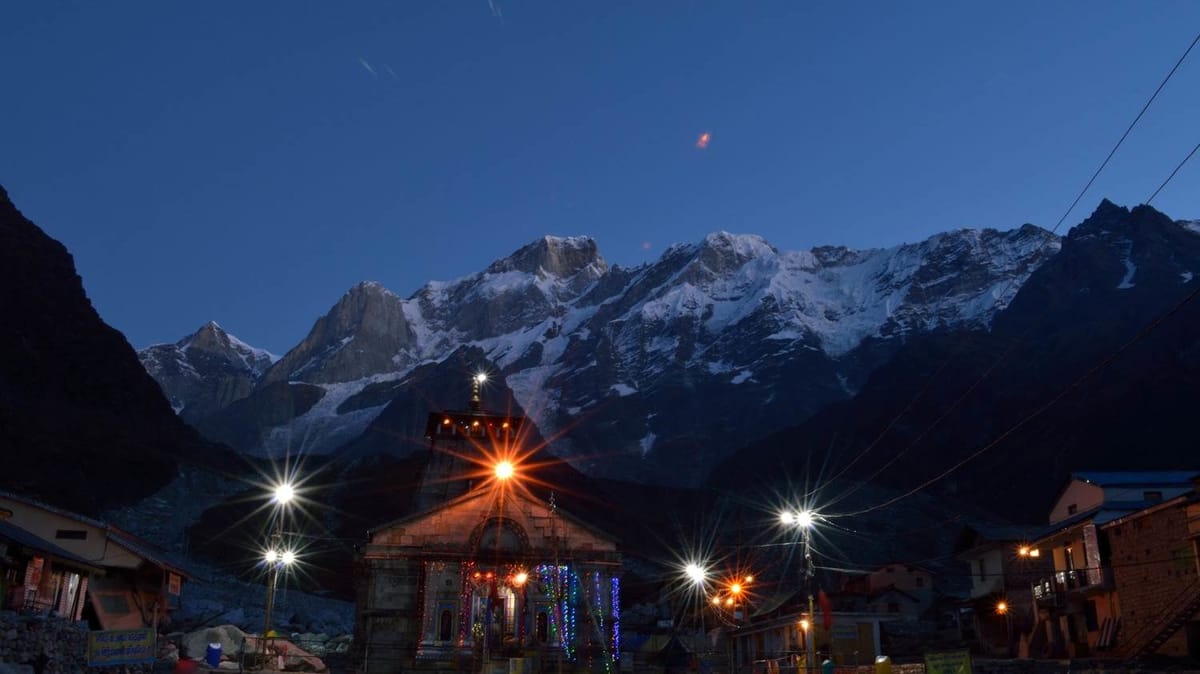
John Mcphee described the Himalayas as the “crowning achievement of the Indo-Australian plate” in his Pulitzer Prize-winning book, ‘Annals of the Former World’. The biodiverse vistas of the Himalayas are home to several exotic species such as the Snow Leopard, Musk Deer, and about 10 percent of the world’s known plant species—to name a few of its gems. One can easily notice a transition from tropical to temperate to coniferous vegetation and grasslands in the landscape with an increase in altitude. And nestled in the remote parts of the northern Himalayas are four significant Hindu pilgrimage centers, considered to be the ultimate pilgrimage for a devotee: The Char Dhams—Yamunotri, Gangotri, Kedarnath, and Badrinath.
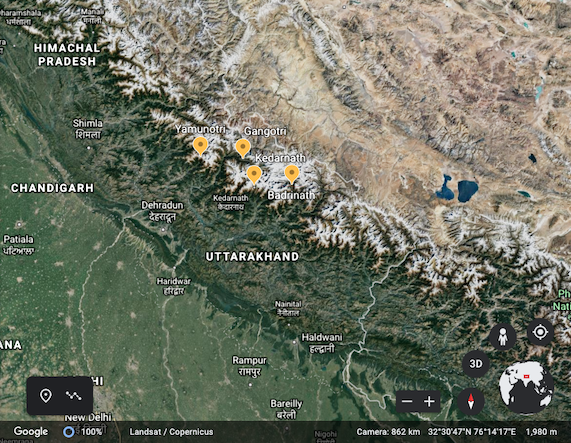
The Government of India inaugurated a 900 km long, 2 lane (12 metre wide) highway project called the ‘Char Dham Mahamarg Vikas Pariyojana’ (Char Dham Highway Development Project), with the motive of boosting religious tourism in the Char Dhams. This all-weather plan is a 12,000 crore INR (1.6 billion USD approx) project which has received major opposition from the citizens and environmental organizations of Uttarakhand who have been tirelessly petitioning and fighting against the detrimental and illegal nature of the project in the court.
https://www.instagram.com/p/CFozETSgL78/?utm_source=ig_web_copy_link
The Modi government used a technical loophole and divided the Project into 50+ smaller projects to bypass environmental clearance and impact assessment reports (NOTE: According to the law, a highway project less than 100 km does not require environment clearance). These “smaller projects” were worked on parallelly and it was even pointed out by the petitioners that the roads were longer than 100 km in some stretches and will have a cumulative impact in the region overall, calling it a ‘geological and ecological fraud.’
During the legal proceedings at the National Green Tribunal, the petitioners alleged the project to be in violation of the Forest (Conservation) Act, 1980 and the Environment Impact Assessment Notification, 2006 and were of the opinion that the cutting of over 25,000 trees (more than 50,000 trees have been cut by now) and illegal dumping of debris into rivers will lead to severe ecological damage.
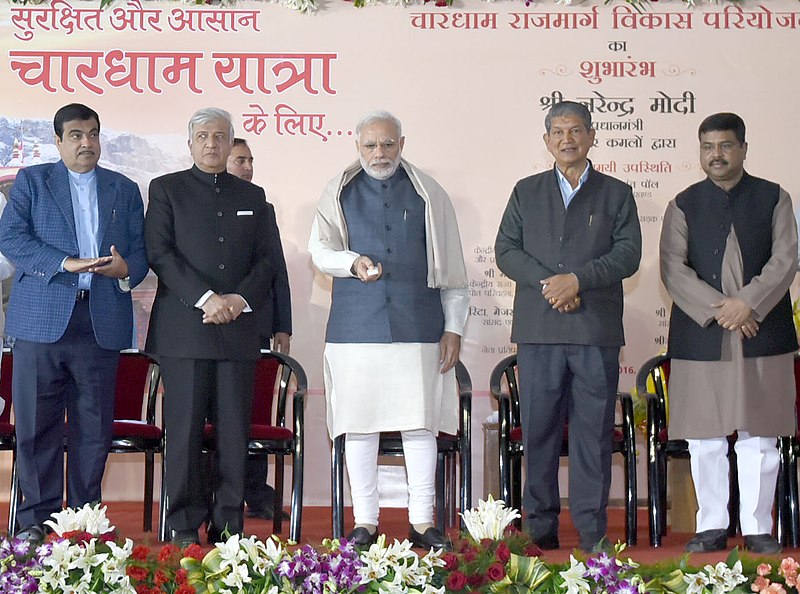
The Supreme Court of India set up a High Powered Committee of 26 members, chaired by Dr. Ravi Chopra, former director of the People’s Science Institute and a noted environmentalist, to review the situation and submit its recommendation. An internal conflict led to the submission of two reports to the Ministry of Environment, with the only difference being on the road width of the highway of the Char Dham Highway plan. The majority of the committee members (mostly the politicians) voted in favor of keeping the original 12 meters road width while the others demanded a road width of 5.5 meters in tune with a Ministry of Road, Transport and Highway (MoRTH) circular published in March 2018 which recommends intermediate road construction in hilly terrain—a document which was brought to light only by a committee member by chance in spite of meetings with the chief engineer in charge of the project and having a director of the Border Roads Organisation (BRO) as a member of the committee over nine months of deliberation.
https://www.instagram.com/p/CE-1phkgXK7/?utm_source=ig_web_copy_link
The circular from March 23, 2018, brought out by MoRTH says that “we observed some challenges during implementation of the 2012 circular in hilly and mountainous terrain and keeping that in mind we now recommend that in hilly and mountainous terrain, road width should be limited to intermediate width.
In an interview with The Wire, Dr. Ravi Chopra shares some insights into the decision making process and internal rifts among the committee members. He says that the government withheld information from the committee despite several attempts to solicit it and that, “the whole thing has been driven by the engineering representative from the Border Road Organization, which is one of the implementing agencies–and he has insisted that we need a 12-meter width. Whenever he was asked to explain what is the width of defense vehicles, he never gave an answer. And if the road width is not adequate, how have troops and materials reached the border until today? When the military moves, it moves in a single column; remember Pulwama. It’s a single column that moves and all other traffic is suspended.”
The Supreme Court on September 9, 2020, gave clearance to the Char Dham Highway Project but ordered that intermediate roads be built with a width of 5.5m in accordance with the 2018 circular by the ministry.
https://twitter.com/Ram_Guha/status/1298467414875676674?ref_src=twsrc%5Etfw
“The entire crux of the debate of the Char Dham Highway Project Issue is the road width. The latest Supreme Court order is to limit the road width to 5.5m in accordance with the 2018 circular by the Ministry of Transport. But the government will only apply the order to new construction and continue their work as it is (road width of 12m) in the previous stretches.” says Mallika.
Mallika Bhanot, member of Ganga Ahvaan, a Uttarakhand-based NGO working for the protection of the Ganga tells The Outdoor Journal that the petitioners against the Char Dham Highway Project have been a combination of Citizens for Green Doon, an organisation based in Dehradun along with the residents from the different Char Dham Valleys—the Bhagirathi Valley, Kedarnath Valley, and Pithoragarh Valley. She points out that there is anyway no worshipping in the winter months, the temples are closed, and that the BRO or other local agencies would clear the snow and travel up in the sections receiving heavy snowfall.
She goes on to explain that one of the petitioners against the project died in a car accident due to a landslide along with 7 others while traveling back to her home in Kedarnath and that many such incidents have occurred over the past two years of the Char Dham road construction.
“If you have such destabilized roads, a wider road is not making you more secure. A more stable road is what will make you more secure”, says Siddharth Agarwal.
The Uttarakhand State Chief Minister, Trivendra Singh Rawat, on the 18th of September 2020, said that the limit of 5.5m width imposed on the Char Dham road by the Supreme Court was not enough from a strategic point of view, referring to the escalating tension between China and India.

Let’s talk about the Geography
The Outdoor Journal reached out to Dr. D.M.Banerjee, Professor of Geology (Retired) and INSA Honorary Scientist, University of Delhi, to discuss the geographical aspect of the project.
The Himalayas lie in the High-Risk Seismic Zone IV owing to their location at the tectonic plate boundary; these young fold mountains were formed due to the collision of the Indo-Australian and Eurasian Plate. “The whole of Japan is a high-risk country but that has not deterred the Japanese to build skyscrapers and dams. The Lhasa has been connected by high-speed trains by the Chinese which cuts across the entire earthquake-prone terrain. The whole of the Alps falls in seismic shadow but roads and trains go up to Mount Titlis and Ice Castle adding millions of dollars to the tourist revenue.” says Dr. Banerjee.
https://www.instagram.com/p/CFMwI3dBMCT/?utm_source=ig_web_copy_link
Many consider the “all-weather road” title attached to the project by the government to be a misnomer but Dr. Ravi Chopra says in his interview with The Wire, “We are saying – go for good technology. There is something called a snow gallery, a very short tunnel. The hanging glacier has a limited width. We know every year that there is an avalanche in this width. So construct a 50-metre tunnel, make a snow gallery like in Rohtang. Again, it’s not something that we can’t do. It’s going to involve additional spending.” Dr. Banerjee further adds that the “All-Weather Road” is the right word to use since the road will pass through tunnels where the mountain tops will be covered by snow during winter. Snowfalls, heavy rains, landslides, earthquakes, tsunamis, or cyclones have not stopped mankind to win over these obstacles.
“No one is against any infrastructural project or sector, but when you do something, you should do it with planning”, says Neha Sinha, Policy Officer at the Bombay Natural History Society, a conservation biologist, and writer.
“Nobody can predict flash floods or earthquakes (with full certainty). That does not mean all developmental activities should come to a standstill. The concern for the pollution of the rivers is partially genuine. In some sectors, especially near the river meanders, the rubble slips down into the river, which may in due course of time cause a minor but local shift in the river course. This aspect is worth probing and necessary advisory can be sent to the project.” adds Dr. Banerjee.

C.P. Rajendran, Professor of Geodynamics at the Jawaharlal Nehru Centre for Advanced Scientific Research, Bengaluru, writes “When geologists of a panel set up by the Supreme Court to investigate environmental aspects of the project say excavations are being done in an unscientific way, we need to take their complaints seriously. When the chairperson of the panel says implementing agencies are not doing a proper job of identifying vulnerable slopes, and are engaged in hill-cutting without making proper arrangements for dumping the muck, building footpaths, and planting trees along the roads, it is time to raise a red flag. The expert members of the panel informed have said the construction work is destabilizing the entire valley–a valley already prone to landslides, cloudbursts, and earthquakes.”
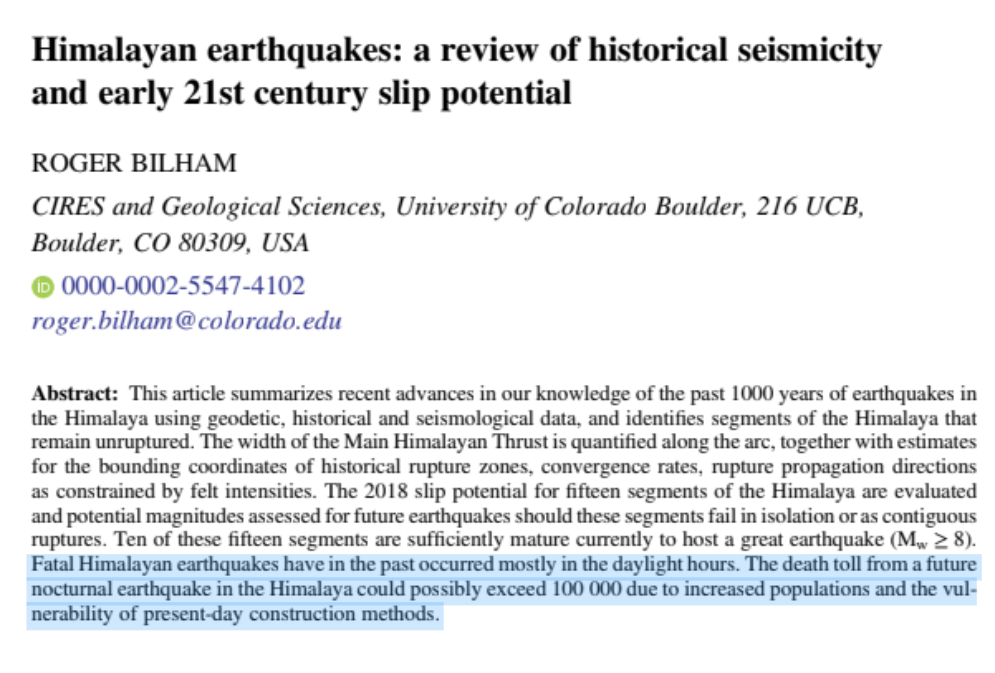
The Himalayas are already facing an ecological crisis due to climate change. Glaciers are receding, rivers are being dammed unsustainably and biodiversity is losing its habitat due to human encroachment. A Policy Research Paper on Climate Change in the Himalayas by Mahesh R. Gautum et al states that there is a clear gap in knowledge of the economic impacts of climate change in the Himalayas and that most literature already predicts increases in temperature and monsoon precipitations along with decreases in winter precipitations in the future leading to monsoon flooding and increased sediments in streamflow.

Religious Tourism and Carrying Capacity of the Himalayas
The Char Dham Highway Project has been of special interest to the Modi administration who have been pushing to complete it as soon as possible, even at the cost of illegally dumping debris into the river to reduce travel time to the designated dumping site, violating the Supreme Court guidelines and avoiding environment clearances. Slopes for 800 km out of the 889 km roadway have already been cut.
https://twitter.com/MallikaBG/status/1003132829373382662?ref_src=twsrc%5Etfw
Religious Tourism is an important vertical of India’s tourism sector involving the faith of domestic tourists and foreign travelers. However, factors like an infringement on the carrying capacity of a region, waste management, and pollution are among the few issues being faced by India’s Religious Tourism as per the Report by FICCI.
The Mission Document 2010 under the National Action Plan on Climate Change by the Government of India accepts that roads are the lifeline of remote and inaccessible regions in the mountains’ interiors. It states that the construction of roads must fully consider the region’s environmental fragility under the ‘Green Road Construction’ section. Some of the recommendations made by the report are that Environmental Impact Assessment be made mandatory for the construction of all state and national roads and expressways of more than 5 km length (including in the extension and widening of existing roads and excluding inter-village roads) and that the road construction should provide for the treatment of hill-slope instabilities resulting from road-cutting, cross drainage work and culverts, using bio-engineering and other appropriate technologies.

The irony of the Prime Minister pitching the project as a tribute to the victims of the 2013 Uttarakhand flash floods is seen in the fact that the Uttarakhand Disaster Report 2013 by the Government’s apex body for monitoring natural disasters states that, “In the hilly terrain, the construction of roads is the main factor disturbing the ecological balance. It also causes serious problems to the drainage pattern, increases soil erosion. Road construction leads to the excavation of steep and unstable slopes, felling of trees and dumping of debris down the slope resulting in damage to the drainage system of the area.”
https://twitter.com/narendramodi/status/813591939312291840?ref_src=twsrc%5Etfw
Siddharth Agarwal, author, and founder of Veditum, has been walking along India’s rivers and trying to document and bring marginalized stories of people and the environment into the mainstream. During a telephonic interview, he unravels some thought-provoking points. He brings to light the fact that most of the studies commissioned by the Uttarakhand Tourism Department to estimate the Tourism Carrying Capacity of the region only consider the level of hospitality infrastructure in the state, “It has nothing to do with the amount of water available, how much the area can take or how much pollution of air, water and sound the area can tolerate.” Calling it unscientific and baseless.
“In reality, Uttarakhand is already creating a lot of stress because of the number of religious tourists that are visiting the area. You look at any religious town, the rivers around it, the solid waste management system — It’s quite visible that something is going wrong.” says Siddharth Agarwal
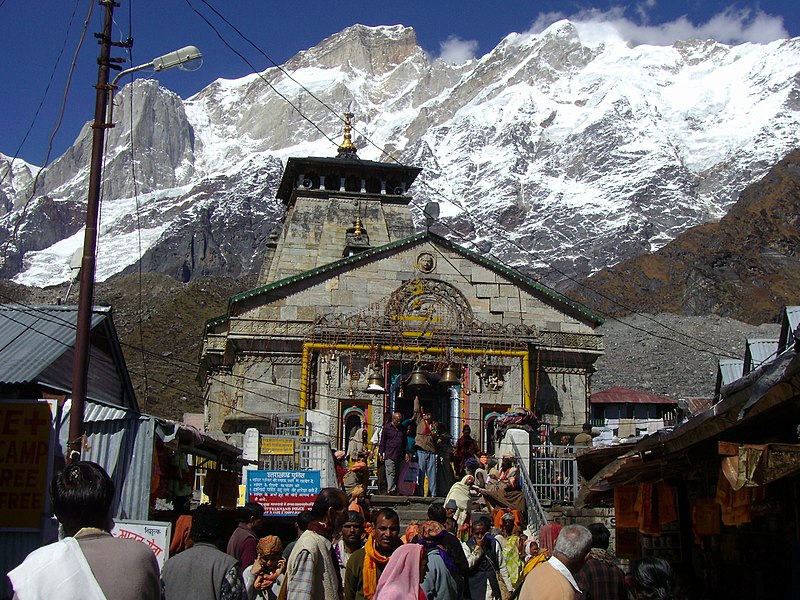
“The same people who go to Gangotri and pray to Ganga there don't really have a problem throwing plastic in the river or if we look at the case of Kedarnath, there are hundreds of helicopter sorties which happen every day in an ecologically fragile area. How is it feasible to do hundreds of helicopter rides every day to an ecologically fragile area to visit a temple? Doesn’t make sense to me when you combine the religious, spiritual, and ecological aspects of it.” he adds.

The Bigger Picture
The Himalayas are a pristine ecosystem already under great stress due to anthropogenic factors like human-induced climate change, the encroachment of land combined with blasting and cutting of slopes for developmental projects. Projects such as the Char Dham Highway, Char Dham Railway, and the Dibang Valley Hydroelectric Project come across as a misguided and irresponsible form of ‘development’ that India’s government seems to be in pursuit of. The Environment Impact Assessment Notification 2020 blatantly dilutes environment protection laws and disregards public participation and was a myopic and aggressive step by the government in its effort to fast-track the ease of doing business. The protests by the public against the EIA notification 2020 was so powerful that it gained international attention and has been given a stay order by the court until further notice.
“The proposed EIA amendments is a clear demonstration that India’s planners do not realise or accept that nature based capital has a greater value than any human capital. Any commercial economic capital we produce has a lesser value than the natural capital we are throwing away.” – Bittu Sahgal, Editor of Sanctuary Asia Magazine
https://twitter.com/elsbeth_tasc/status/1300060319927033856?ref_src=twsrc%5Etfw
India’s judiciary has been a strong pillar of support for the country’s environment in many instances but it is despairing to see court orders shamelessly disregarded by the authorities. To realize that such big projects are getting a go-ahead without any assessment studies and carried out in such an unsustainable manner, especially in an unstable and fragile region such as the Himalayas is a cause of worry. It has been a mockery in itself to see the government working starkly against their own laws and reports. With impressive PR but new doctored reports, one can’t help but wonder who is benefiting from all of this in the long run.

For all the lovers of the outdoors, here is a comment by Siddharth during our conversation which may just strike a chord with you, “In our overall efforts to safeguard the environment, it is not just environmentalists but other stakeholders who become part of the larger moment. Because for all the people who say that they are apolitical and then will go climb a mountain—there will be no mountains to climb if you continue to be apolitical.”
Feature Image by Naresh Balakrishnan




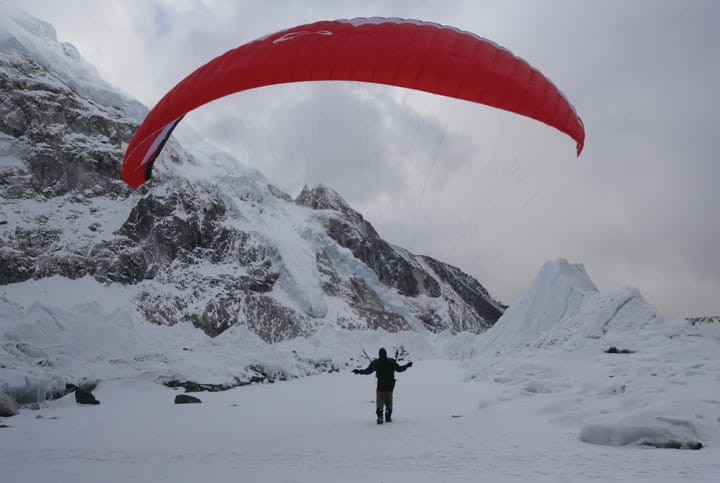
Comments ()